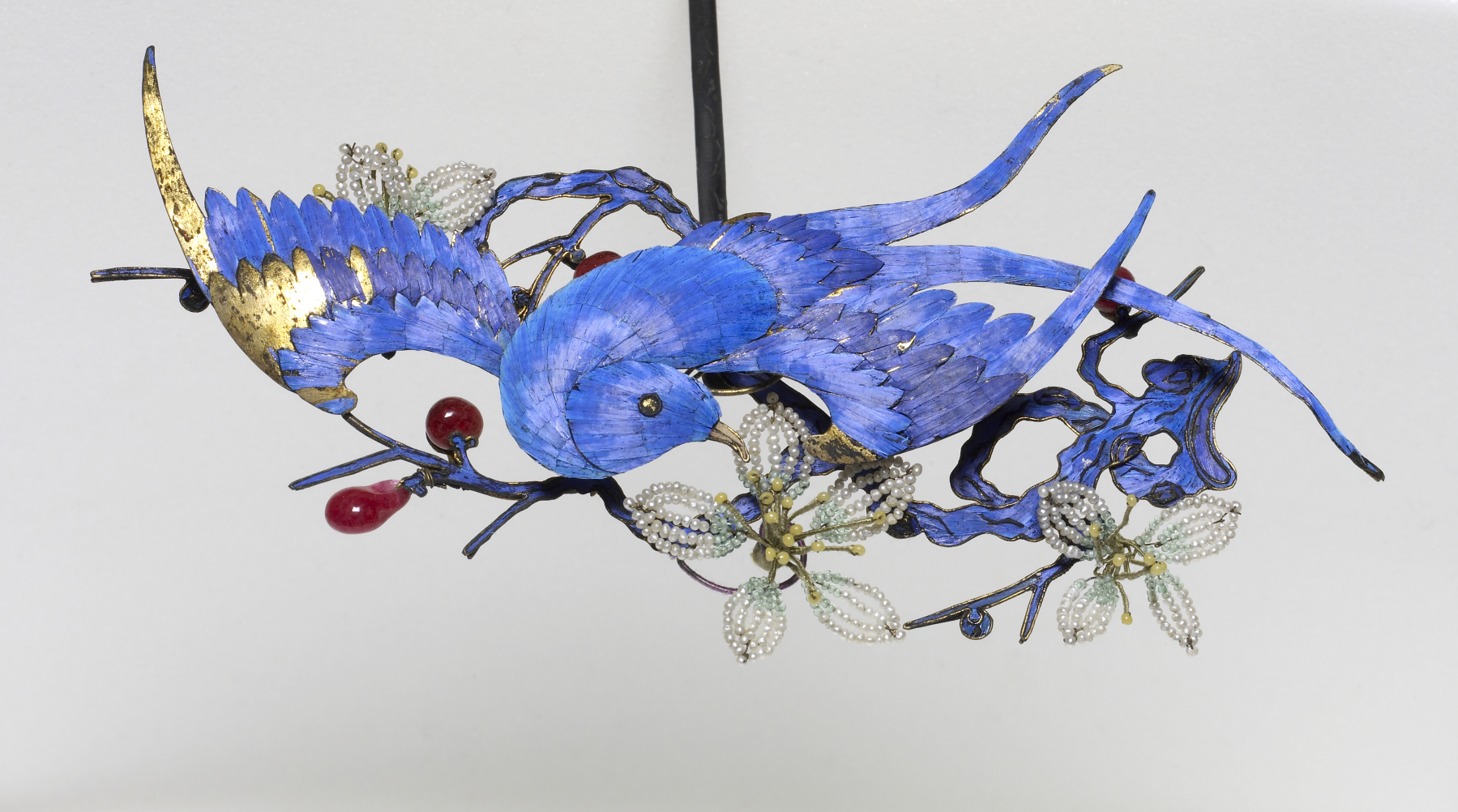Hair Ornament
This pair of ornaments (with Walters 86.14) and headdress (Walters 86.3) were likely once worn by the empress dowager, the effective ruler of China during the later years of the Qing Dynasty. It is an exquisite example of Chinese decoration and the symbolism used to express one's rank. The small phoenixes emerging from the surface represent the empress, while the myriad of pearls and gemstones mark this piece as something special for the adornment of the highest ranking woman in Chinese society. The brilliant blue feathers of the kingfisher give these accessories an eye-catching quality that anyone interested in being recognized would certainly embrace.
Provenance
Provenance (from the French provenir, 'to come from/forth') is the chronology of the ownership, custody, or location of a historical object. Learn more about provenance at the Walters.
Auguste F. Chamot [date and mode of acquisition unknown]; Henry Walters, Baltimore, 1907 [mode of acquisition unknown]; Walters Art Museum, 1931, by bequest.
Exhibitions
| 2006-2009 | Bedazzled: 5,000 Years of Jewelry from the Walters Art Museum. Frist Center for the Visual Arts, Nashville; The John and Mable Ringling Museum of Art, Sarasota; The Walters Art Museum, Baltimore. |
Geographies
China (Place of Origin)
Measurements
H with Stem: 5 11/16 × W: 5 1/16 × D: 1 3/8 in. (14.5 × 12.9 × 3.5 cm); H without Stem: 2 3/8 in. (6 cm)
Credit Line
Acquired by Henry Walters, 1907
Location in Museum
Not on view
Accession Number
In libraries, galleries, museums, and archives, an accession number is a unique identifier assigned to each object in the collection.
In libraries, galleries, museums, and archives, an accession number is a unique identifier assigned to each object in the collection.
86.1




